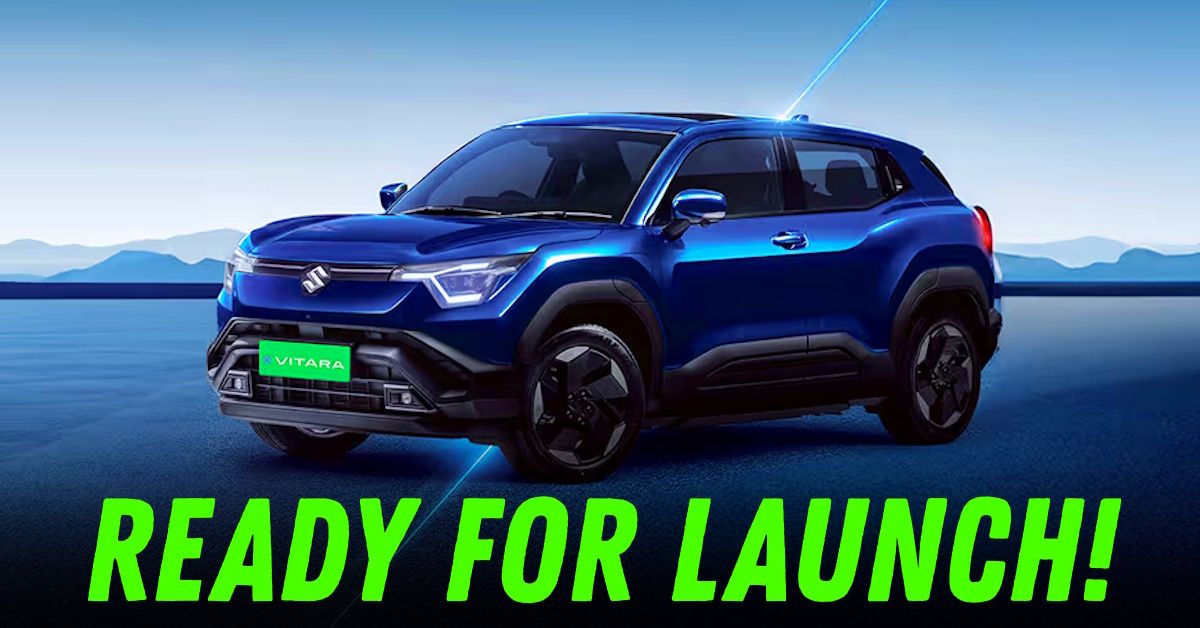Upcoming Maruti Suzuki e-Vitara Electric SUV: What To Expect


Maruti Suzuki’s first electric vehicle, the e-Vitara, is set to debut in weeks from now, marking the brand’s long-awaited entry into the EV space. As excitement builds, fresh details about its pricing, battery performance, and competitive positioning against rivals like the Hyundai Creta EV and Tata Curvv EV suggest it could be a game-changer.
The e-Vitara enters a fast-growing segment dominated by the Hyundai Creta EV and Tata Curvv EV, but Maruti’s approach could prioritise affordability, practicality, and a robust support network. We expect to cost the same but offer more, undercutting the Creta EV while offering a larger base battery of 49 kWh compared to the Creta EV’s 45 kWh. The top-spec variant will feature a 61 kWh battery, claiming a range of 500 km, slightly edging out the Creta EV’s 480 km and the Curvv EV’s 465 km.
Safety is another strong suit, with the e-Vitara offering seven airbags as standard, along with Level 2 ADAS features such as adaptive cruise control and lane-keep assist. While the Creta EV offers Level 2 ADAS as an optional extra, the Curvv EV lags behind with only Level 1 capabilities. Maruti’s extensive after-sales network, with over 3,000 service centres across India, further strengthens its appeal.
Dealers say response has been overwhelmingly positive, with many reporting strong interest. Select Nexa outlets have already started accepting token bookings of ₹25,000, reflecting the confidence of early buyers in Maruti’s first electric SUV.
Maruti has partnered with Tata Gotion and FinDreams Battery (a BYD subsidiary) to ensure a stable and cost-efficient lithium-ion battery supply. While the 61 kWh variant boasts a claimed 500 km range.
Recognising that charging infrastructure is a major concern for potential EV buyers, Maruti is aggressively expanding its charging network. The company has announced plans to set up 25,000 charging stations across India before the e-Vitara’s launch. Fast chargers will be installed every 5–10 km in the top 100 cities, ensuring better accessibility. Additionally, Maruti has partnered with Tata Power, Statiq, and Euler Motors to establish fast-charging corridors for intercity travel.
Beyond public charging, Maruti is integrating EV charging facilities into its vast service network. Over 1,500 EV-enabled workshops will be spread across 1,000 cities, with dedicated charging bays and trained technicians. Roadside assistance will also be available for battery-related emergencies, giving customers added confidence. To make the ownership experience seamless, a dedicated mobile app will provide real-time charger availability, payment options, and route planning. It will be interesting to see if Maruti offers Battery-as-a-Service option [as MG Motors did with Windsor] to reduce the high upfront cost of EVs.
The e-Vitara will come with a comprehensive ADAS suite. It includes adaptive cruise control, lane-keep assist, blind-spot monitoring, multi-collision braking, and rear cross-traffic alert. These features significantly enhance safety, particularly for highway driving, making the e-Vitara an attractive option for frequent travellers.
Dealerships, particularly in metro cities like Mumbai and Delhi, report a surge in interest from first-time EV buyers. Around 30% of inquiries are from customers new to the electric segment, many of whom are drawn by Maruti’s reputation for reliability and affordability. Buyers also appreciate the inclusion of premium features such as a 10.1-inch touchscreen, a panoramic sunroof, and a 10-speaker Harman audio system, which set the e-Vitara apart from some of its rivals.
However, a few concerns remain. Some buyers are waiting for more clarity on battery leasing options, which are expected to be introduced post-launch. Others are keen to understand the cost of home charger installation, which is estimated to range between ₹50,000 and ₹75,000. Maruti’s ability to address these concerns will be key to its success in the EV segment.
Export Plans: Global Ambitions
Maruti is not just focusing on the domestic market with the e-Vitara. The Gujarat plant will also produce units for export to Europe and Japan, leveraging India’s cost advantages. Given Maruti’s strong presence in these international markets, the e-Vitara’s competitive pricing and efficiency could make it a strong contender globally. In fact, India will be the global hub for EV manufacturing for Suzuki—that should lead to good volumes and lower production costs allowing Maruti to price e-Vitara competitively.
For urban buyers, the e-Vitara’s compact dimensions (4,275 mm in length) and long range make it an excellent choice for city commuting. Highway users will benefit from its Level 2 ADAS features and 180 mm ground clearance, making it well-suited for longer journeys. Budget-conscious buyers may find the ₹22 lakh starting price appealing, particularly in comparison to the pricier Creta EV. However, the Tata Curvv EV still remains the more affordable alternative in the segment.
The success of the e-Vitara will hinge on Maruti’s ability to execute its charging infrastructure plan and provide strong after-sales support. While Hyundai’s Creta EV may offer more high-tech features, Maruti’s approach—focusing on practicality, safety, and affordability—could be the key to mass EV adoption in India.
With launch set for April 2025, Maruti has set an ambitious target of making EVs account for 15% of its total sales by 2030. If the e-Vitara lives up to expectations, it could be the car that finally brings electric mobility into the mainstream for Indian buyers.